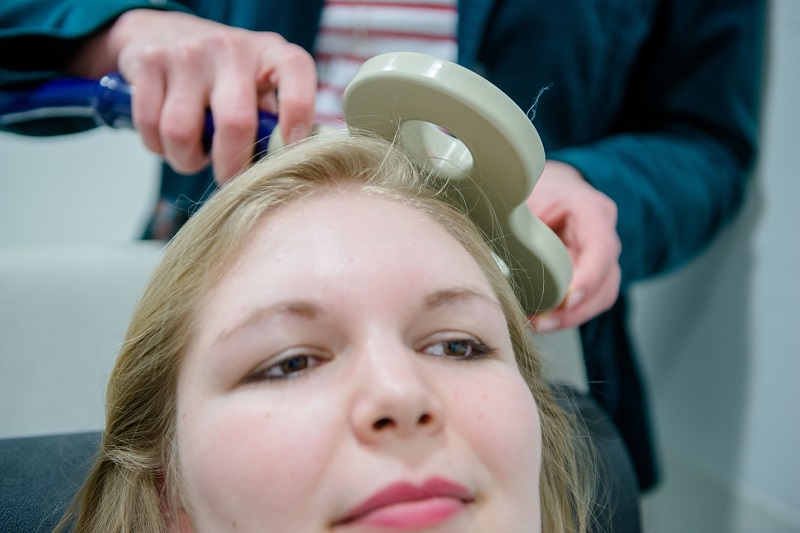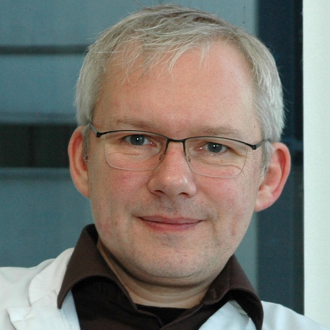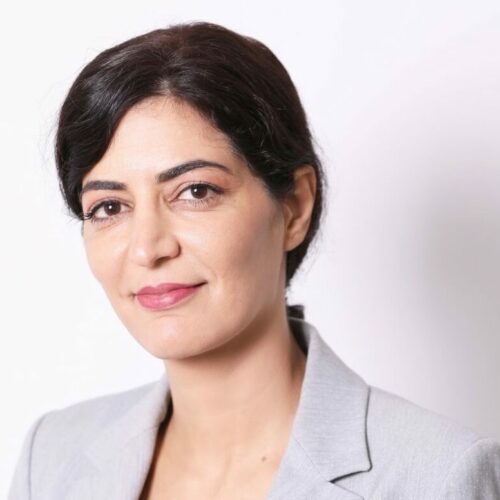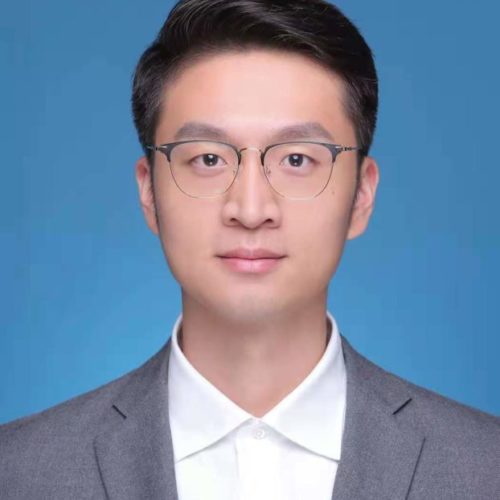
A06 – Exploration kausaler Mechanismen der Furcht-Extinktion: Netzwerke, Plastizität und Weiteres
Michael Nitsche, Fatemeh Yavari
In diesem Projekt werden wir die spezifische Interaktion zwischen dem anterioren Netzwerk (Hippokampus, Amygdala, präfrontaler Kortex) und dem Kleinhirn für die Extinktion (Studie 1) untersuchen; werden nicht-invasive Hirnstimulationsprotokolle entwickeln, die geeignet sind für eine gezielte Modulation von Extinktions-relevanten Arealen wie sie in Studie 1 identifiziert wurden (Studie 2); werden diese anwenden, um die Kausalität entsprechender physiologischer Interaktionen für Extinktion zu untersuchen (Studie 3) und werden zelluläre Mechanismen in entsprechenden Ziel-Arealen für die Extinktion klären durch eine kombinierte Anwendung von Pharmakologie (Relevanz von Serotonin) und Stimulation (Studie 4).
Leitfragen des Projekts A06:
- Interagiert das Kleinhirn während der Extinktion von Angst mit den vorderen Teilen des Extinktionsnetzwerkes zur Aktivitätssynchronisation, einschließlich seiner oszillatorischen Aktivität?
- Was ist die spezifische Rolle von intrinsisch cerebellaren gegenüber anterior cerebellaren Netzwerkinteraktionen während der Angstextinktion – echte Interaktion oder eine modulatorische Rolle des Kleinhirns?
- Führt eine Intervention durch nicht-invasive Hirnstimulation der entsprechenden Zielbereiche in Kombination mit serotonergenen Verstärkern zu einer optimierten Extinktion von Angst aufgrund der Modulation der Plastizität?

10 projektrelevante Publikationen
Batsikadze G, Rezaee Z, Chang DI, Gerwig M, Herlitze S, Dutta A, Nitsche MA, Timmann D (2019) Effects of cerebellar transcranial direct current stimulation on cerebellar-brain inhibition in humans: A systematic evaluation. Brain Stimul 12(5):1177–1186. https://doi.org/10.1016/j.brs.2019.04.010
Chhabra H, Ma Y, Genç E, Nitsche MA, Yavari F (2025) The physiological foundation of extinction improvement by tDCS over the ventromedial prefrontal cortex (vmPFC): An fMRI study. SSRN: abstract=5180197. https://doi.org/10.2139/ssrn.5180197
Küper M, Mallick JS, Ernst T, Kraff O, Thürling M, Stefanescu MR, Göricke S, Nitsche MA, Timmann D (2019) Cerebellar transcranial direct current stimulation modulates the fMRI signal in the cerebellar nuclei in a simple motor task. Brain Stimul 12:1169-1176. https://doi.org/10.1016/j.brs.2019.04.002
Ma Y, Jiao F, Batsikadze G, Yavari F, Nitsche MA (2024) The impact of the left INFerior frontal gyrus on fear extinction: A transcranial direct current stimulation study. Brain Stimul 17:816-825. https://doi.org/10.1016/j.brs.2024.07.004
Ma Y, Kyuchukova D, Jiao F, Batsikadze G, Nitsche MA, Yavari F (2025) The impact of temporal distribution on fear extinction learning. Int J Clin Health Psychol 25:100536. https://doi.org/10.1016/j.ijchp.2024.100536
Marković V, Vicario CM, Yavari F, Salehinejad MA, Nitsche MA (2021) A systematic review on the effect of transcranial direct current and magnetic stimulation on fear memory and extinction. Front Hum Neurosci 15:655947. https://doi.org/10.3389/fnhum.2021.655947
Marković V, Rizzo G, Yavari F, Vicario C, Nitsche MA (2025) Exploring the effect of transcranial direct current stimulation during REM sleep on fear extinction memory consolidation. bioRxiv. https://doi.org/10.1101/2025.03.31.646182
Miterko, LN, Nitsche, M. A., Timmann, D., et al. (2019) Consensus paper: Experimental neurostimulation of the cerebellum. Cerebellum 18:1064–1097. https://doi.org/10.1007/s12311-019-01041-5
Polanía R, Nitsche MA, Ruff CC (2018) Studying and modifying brain function with non-invasive brain stimulation. Nat Neurosci. https://doi.org/10.1038/s41593-017-0054-4
Stagg CJ, Antal A, Nitsche MA (2018) Physiology of transcranial direct current stimulation. J ECT 34:144–152. https://doi.org/10.1097/YCT.0000000000000510
Vicario CM, Makris S, Culicetto L, Lucifora C, Falzone A, Martino G, Ferraioli F, Nitsche MA, Avenanti A, Craparo G (2023) Evidence of altered fear extinction learning in individuals with high vaccine hesitancy during COVID-19 pandemic. Clin Neuropsychiatry 20:364–369. https://doi.org/10.36131/cnfioritieditore20230417




